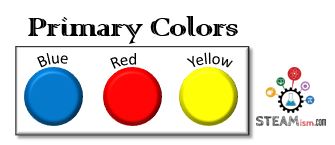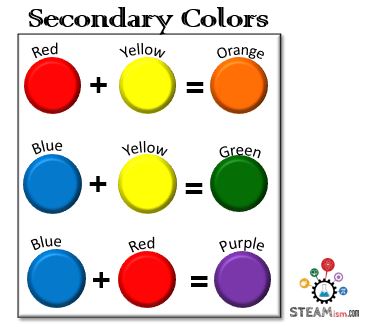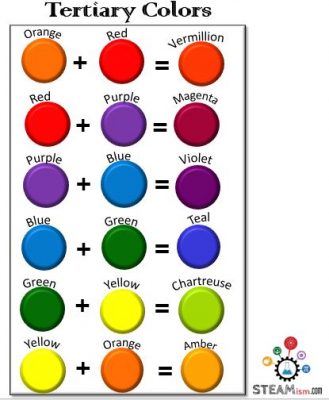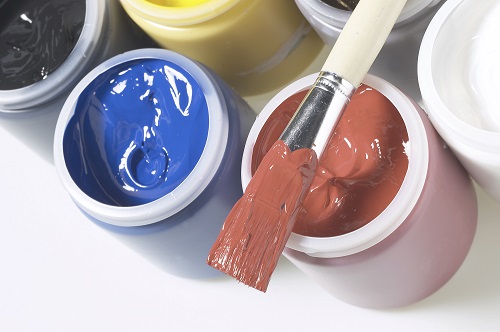What is color?
Color is a property of objects that is caused by varying amounts and qualities of light being reflected off them.
- As the light hits the object, a part of the light wave is absorbed into the object.
- The rest of the light wave is reflected back and becomes the “color” that we see.
Primary Colors – Blue, Red, Yellow (Traditional RYB color model)

- Are the most basic of colors.
- No other colors can be mixed to create these colors.
- All other colors are made from these colors.
However, note that there’s not only one primary blue, red, and yellow like you see above. There are many variations of blues, reds, and yellows that are all considered primary.
Secondary Colors – Green, Orange, and Purple

- Are colors formed by mixing equal amounts of two primary colors
- The ratio of primary colors you use in the mix will determine the final hue of your secondary colors.
Tertiary Colors – Vermilion, Amber, Chartreuse, Teal, Violet, Magenta

- Are colors formed by mixing one primary and one secondary
- Red-Orange = Vermilion
- Yellow-Orange = Amber
- Yellow-Green = Chartreuse
- Blue-Green = Teal
- Blue-Purple = Violet
- Red-Purple = Magenta
Complementary Colors
- Are color pairs that cancel each other out when combined, by producing a gray-scale color like white or black.
- When placed next to each other, they create the strongest contrast for those particular two colors.
Ready to learn more?
Need flash cards to revise quickly? Quizlet Flash Cards on Primary, Secondary, Tertiary and Complementary Colors
Latest posts by Divya Pochimcherla (see all)
- How To Write A Lab Report - April 8, 2023
- The States (Phases) of Matter - June 9, 2020
- What is Engineering? - June 2, 2020
